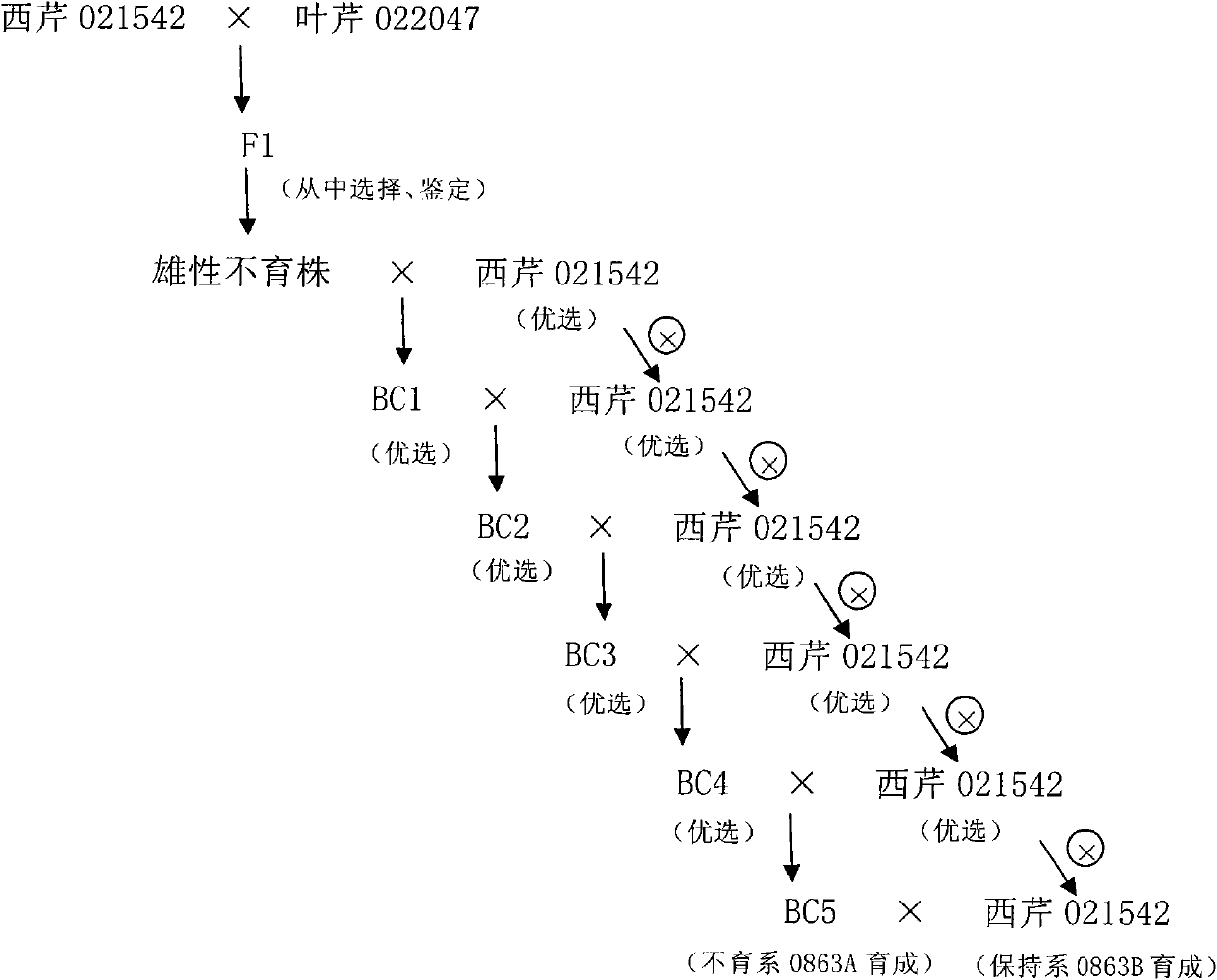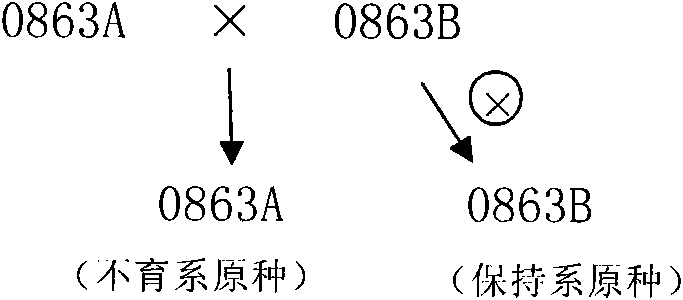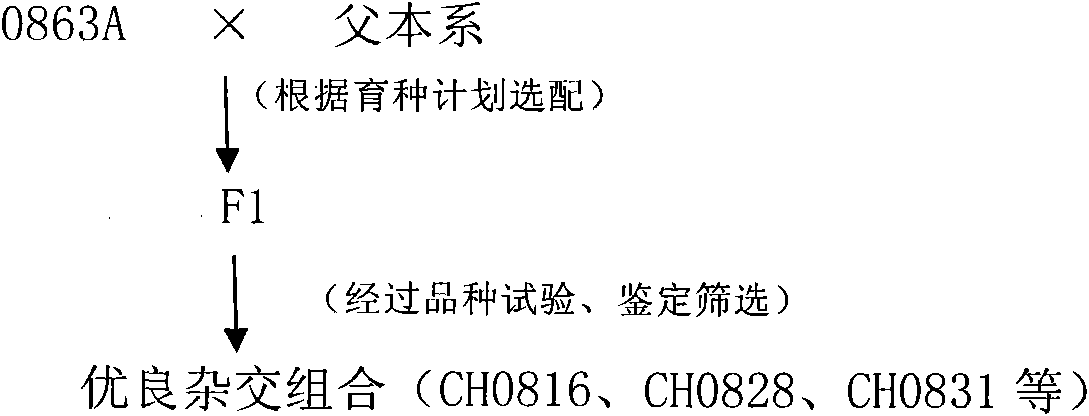Celery cytoplasmic male sterile line breeding method and cross-breeding method using celery cytoplasmic male sterile line
A technology of male sterile lines and male sterility, applied in the fields of botany equipment and methods, application, plant gene improvement, etc., can solve the problem of untimely and incomplete removal of fertile plants, limiting the scope of technology application and promotion, and affecting mother and father The hybridization rate and other issues can achieve the effect of reducing the pollution of pesticides to the environment, the performance of the plants is uniform, and the advantages are remarkable.
- Summary
- Abstract
- Description
- Claims
- Application Information
AI Technical Summary
Problems solved by technology
Method used
Image
Examples
Embodiment 1
[0025] Breeding Method of Celery Cytoplasmic Male Sterile Line "0863A"
[0026] 1. Using the celery material "021542" (Apium graveolens var.dule) from the United States as the female parent and the celery material "022047" (Apium graveolens var.secalium) from Vietnam as the male parent, artificially controlled hybridization was carried out (Honma, S.A method for celery hybridization. Proc. Am. Soc. Hort. Sci. 1959, 73: 345-348), and F1 seeds were obtained.
[0027] 2. Sow F1 seeds in autumn. After F1 enters the flowering period in the following year, observe and identify the flower organ characteristics of each plant, and select all open florets on the entire plant from which the anthers are thin, dim in color, short in filaments, and have never cracked and loose powder. Process, seed plants that can show typical male sterility, use such male sterile plants as female parents, collect pollen of celery material "021542" for artificial assisted pollination, and obtain the first g...
Embodiment 2
[0031] Propagation method of celery cytoplasmic male sterile line "0863A" and its corresponding maintainer line "0863B"
[0032] From the end of August to the beginning of September, the celery cytoplasmic male sterile line "0863A" and its maintainer line "0863B" were sown at the same time in the rainproof shed, and the seeding rate was controlled at about 1 gram per square meter of seedbed. After the seedlings are established, the CMS line "0863A" and the maintainer line "0863B" are planted in the solar greenhouse respectively, with a row-to-plant spacing of 60 cm x 50 cm, and routine field management is carried out to make them grow robustly. When they grow into large plants in spring, Select plants with typical variety characteristics and transplant them to plots with high fertility and good irrigation and drainage conditions. Before planting, it is necessary to plow the land deeply and apply enough base fertilizer to make a long border with a width of 1.2 meters. The ster...
Embodiment 3
[0034] The method of using celery cytoplasmic male sterile line "0863A" to reproduce the first generation of hybrids
[0035] From the end of August to the beginning of September, the celery cytoplasmic male sterile line "0863A" and the male line selected according to the breeding plan were sown in the rainproof shed respectively. The seedbed area of the sterile line "0863A" was three times that of the male line. The seeding rate per square meter of seedbed is controlled at about 1 gram. Weeding and thinning are done in time after emergence, and the soil is often kept moist. When the seedlings grow to two leaves and one heart to three leaves and one heart, divide the seedlings in the sun bed, and the number of seedlings divided per square meter is 100 to 150. After the low temperature comes, cover it with a plastic film to keep it warm. When the lowest temperature drops to -3°C to -4°C, cover it with grass thatch during the day to prevent damage from excessive low temperatur...
PUM
 Login to view more
Login to view more Abstract
Description
Claims
Application Information
 Login to view more
Login to view more - R&D Engineer
- R&D Manager
- IP Professional
- Industry Leading Data Capabilities
- Powerful AI technology
- Patent DNA Extraction
Browse by: Latest US Patents, China's latest patents, Technical Efficacy Thesaurus, Application Domain, Technology Topic.
© 2024 PatSnap. All rights reserved.Legal|Privacy policy|Modern Slavery Act Transparency Statement|Sitemap



